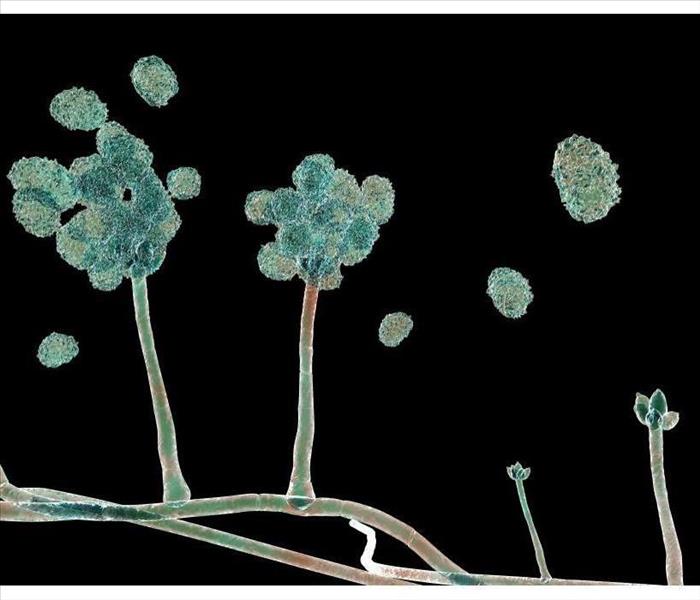What Is Black Mold?
3/26/2020 (Permalink)
As a homeowner in Vermilion Hill, PA, you may have heard about the dangers of black mold and worry that you may have it in your environment. Mold spores of all varieties are abundant outside and don't usually cause much of a problem unless they take up residence inside your home. Once mold invades your space, you need to identify it and clean it out quickly to keep it from multiplying. Knowing the characteristics of this mold will help you determine if you might have it.
Where Does it Grow?
Black mold, or Stachybotrys chartarum, is commonly found in high moisture areas such as basements, bathrooms, and laundry rooms. It grows especially well on porous material with a high cellulose content:
- Fiberboard
- Paper
- Drywall
- Gypsum board
- Wood
- Carpet fibers
After a flood, when humidity is high, or if moisture is left to sit, the spores can take hold and mold can begin forming in as little as 24-48 hours. If you suspect water damage, you can conduct a mold inspection to find and identify any problems you may be having. Mold remediation should begin as soon as possible so that it does not continue to spread.
What Does it Look Like?
Contrary to its common name, it is not always solid black. It can also be almost black with dark green or grey tints. The surface is often shiny, which differs from other common household molds. Its moisture content causes it to be dampened downward, so it does not travel as easily through the air as other varieties. Once it takes hold of a surface, the lateral growth can be quite rapid.
When you find mold in your home, you can try using bleach, Borax, or vinegar to remove it yourself. If you suspect black mold or spores lurking where you cannot see them, you should contact a professional mold remediation company to begin mold cleanup.






 24/7 Emergency Service
24/7 Emergency Service
